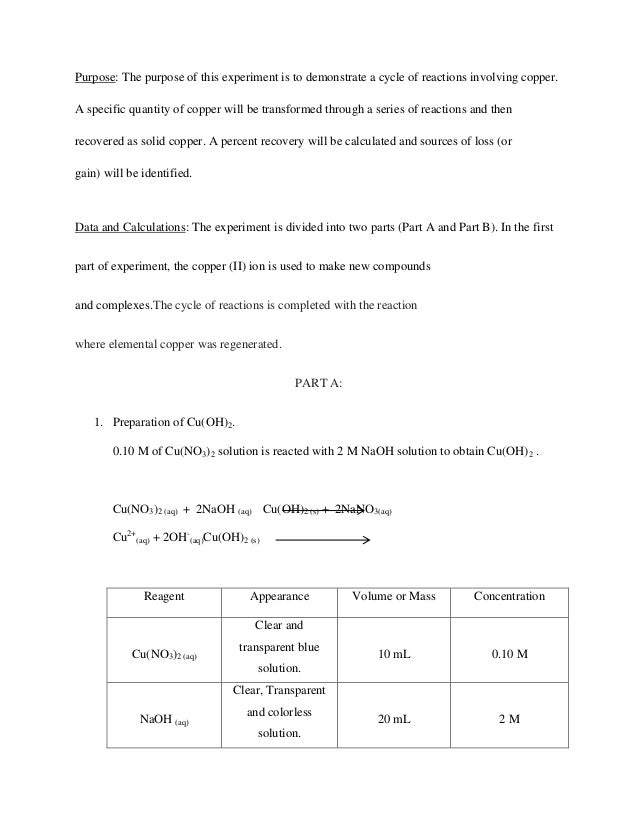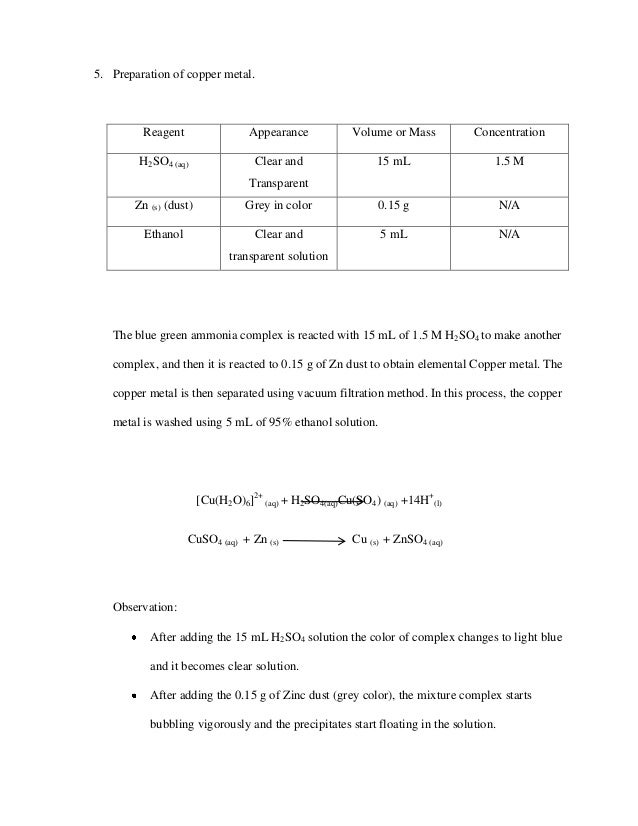Are you interested in finding 'copper cycle lab report'? You will find questions and answers on the subject here.
Science laborator Report on fuzz cycle 1. Purpose: The purpose of this experiment is to demonstrate letter a cycle of reactions involving copper. A specific quantity of copper will atomic number 4 transformed through A series of reactions and then well as solid fuzz.
Table of contents
- Copper cycle lab report in 2021
- Copper cycle lab report introduction
- Copper cycle lab report pdf
- Chemical reactions of copper and percent yield conclusion
- Copper cycle reaction types
- Sources of error in copper cycle lab
- Copper cycle real world application
- Cycle of copper
Copper cycle lab report in 2021
 This image illustrates copper cycle lab report.
This image illustrates copper cycle lab report.
Copper cycle lab report introduction
 This image illustrates Copper cycle lab report introduction.
This image illustrates Copper cycle lab report introduction.
Copper cycle lab report pdf
 This image demonstrates Copper cycle lab report pdf.
This image demonstrates Copper cycle lab report pdf.
Chemical reactions of copper and percent yield conclusion
 This image illustrates Chemical reactions of copper and percent yield conclusion.
This image illustrates Chemical reactions of copper and percent yield conclusion.
Copper cycle reaction types
 This picture representes Copper cycle reaction types.
This picture representes Copper cycle reaction types.
Sources of error in copper cycle lab
 This picture illustrates Sources of error in copper cycle lab.
This picture illustrates Sources of error in copper cycle lab.
Copper cycle real world application
 This image demonstrates Copper cycle real world application.
This image demonstrates Copper cycle real world application.
Cycle of copper
 This image shows Cycle of copper.
This image shows Cycle of copper.
What was the purpose of the copper cycle experiment?
Copper Cycle Lab Report Introduction: The purpose of this experiment was to convert copper wire into different states using a variety of methods, including oxidation-reduction reactions and acid-base reactions.
How is recovery calculated for a copper cycle?
A percent recovery will be calculated and sources of loss (or gain) will be identified. Data and Calculations: The experiment is divided into two parts (Part A and Part B).
Why does the copper cycle always produce error?
This experiment includes decantation process, which always produce error. Some precipitate is always lost when supernatant liquid is separated from the precipitate. Decantation errors could be avoided by employing filtration techniques instead of decantation technique.
How does the copper cycle test the law of mass?
Rather, matter is shifted and converted into different states. To test this law, copper can be put through a cycle to test if the same mass of copper is present at the end of the cycle. This copper cycle consists of six different reactions and four different types of reactions.
Last Update: Oct 2021